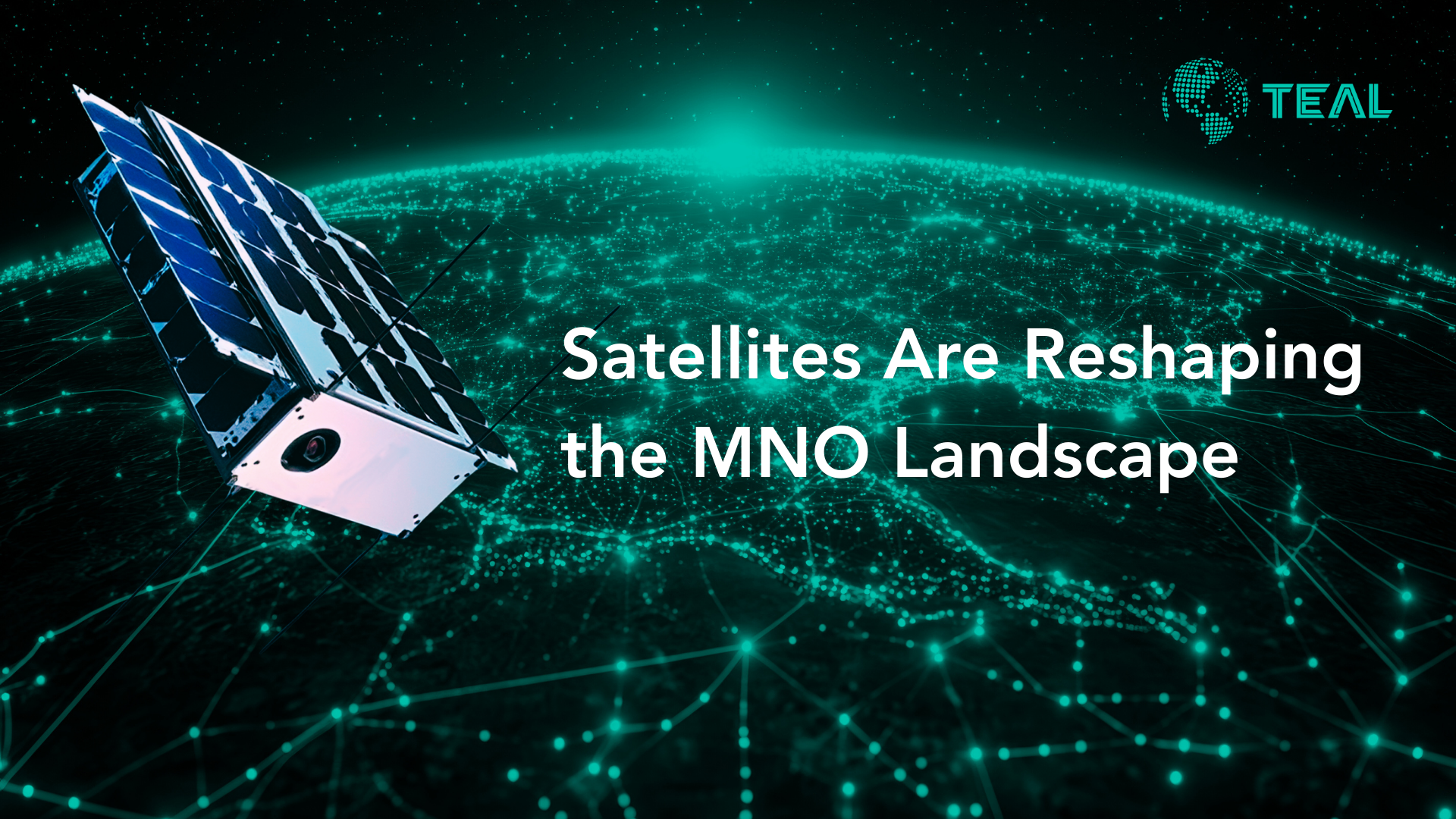The IoT eSIM Specification (SGP.32): Simplifying IoT Device Integration and Adoption

As the world becomes more interconnected, the Internet of Things (IoT) has become increasingly popular. From the bustling urban cityscape to the remote corners of the world, the Internet of Things (IoT) is changing the way we live, work, and play. The numbers only confirm this: GSMA Intelligence predicts over 4 billion cellular IoT connections by 2025, up from 2 billion in 2021. The sheer number of connected devices is growing, and so too is demand for IoT networking solutions. Among these, eSIMs have gained significant traction in recent years due to their flexibility and ease of use. But while the opportunities are staggering, so are the challenges. Enter the IoT eSIM specification (SGP.32). The GSMA’s publication of SGP.32 is a major development that further advances the applications of eSIM technology.
But what exactly is the IoT eSIM Specification SGP.32? In this blog, we’ll explore what you need to know about this new standard, its benefits, and what it means for the future of IoT.
The IoT eSIM Specification (SGP.32) Overview
On May 26th, 2023, the GSMA published the IoT eSIM specification (SGP.32), which is a significant step towards the adoption of eSIM technology at scale. This game-changing standard is poised to catalyze the adoption and integration of eSIM technology in IoT devices. It addresses two major challenges of eSIM adoption – simplifying integration among mobile network operators (MNOs) and original equipment manufacturers (OEMs) and supporting the use of eSIMs in constrained IoT devices. The result? A streamlined market, robust security, and a seamless management system for the entire SIM lifecycle. In essence, SGP.32 is a set of guidelines developed by the GSMA that define how eSIMs integrate into IoT devices.
The SGP.32 specification is aimed at supporting the requirements of IoT devices that are deployed at scale. IoT devices are typically small, low-power devices that need to be remotely managed. A critical challenge for the adoption of eSIM technology in IoT devices has been the fragmentation and complexity of the market. The SGP.32 eSIM standard has been specifically designed to address fragmentation and interoperability issues that enable remote management of the entire SIM lifecycle, including activation, deactivation, and management, making it the perfect solution for IoT manufacturers and operators.
One of the key strengths of SGP.32 is that it builds on two existing eSIM standards: SGP.02 and SGP.22, which were specifically designed for traditional SIM and consumer eSIM use cases, respectively.
By building on these existing standards, SGP.32 simplifies the integration of eSIM technology among a large number of MNOs and OEMs. This is important because it reduces the complexity involved in adopting eSIMs for IoT devices, making it easier to get these devices to market. Additionally, SGP.32 provides support for constrained devices, which have limited resources in terms of battery power, user interface, and communication protocol. This support means that SGP.32 can help enable eSIM adoption across a wider range of IoT devices, making it easier for organizations to connect their devices.
Another important feature of the SGP.32 specification is its support for remote SIM provisioning. This means that eSIMs can be programmed remotely, without needing to physically access the device. This is a huge advantage for IoT devices that are deployed in remote or hard-to-reach locations, saving time and money in terms of device management. With remote provisioning, organizations can also potentially reduce the risk of device theft or tampering. SGP.32 specification also supports a range of different security features. These include secure boot, device authentication, and secure communication between a device and mobile network. This is especially important in the context of IoT technology, where security threats can come from a wide range of sources. By providing robust security features, SGP.32 can help organizations ensure that their IoT devices are protected against threats.
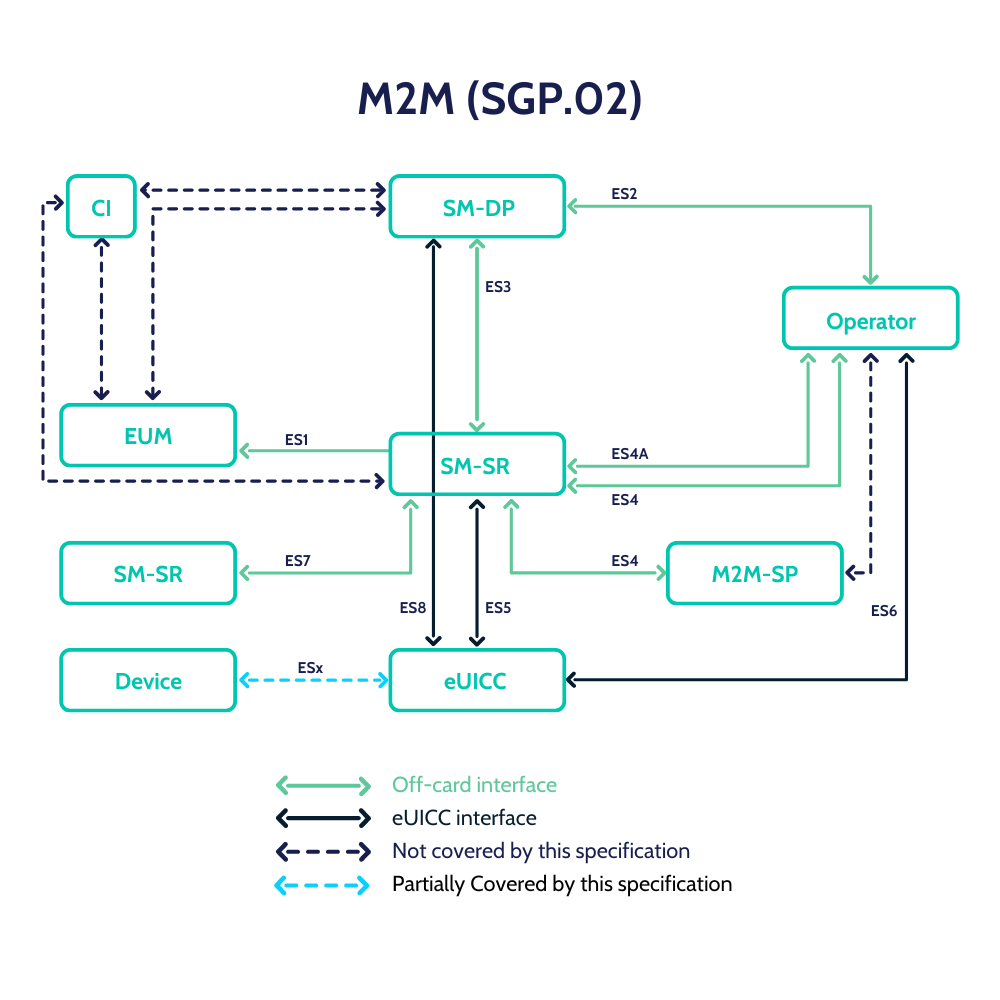
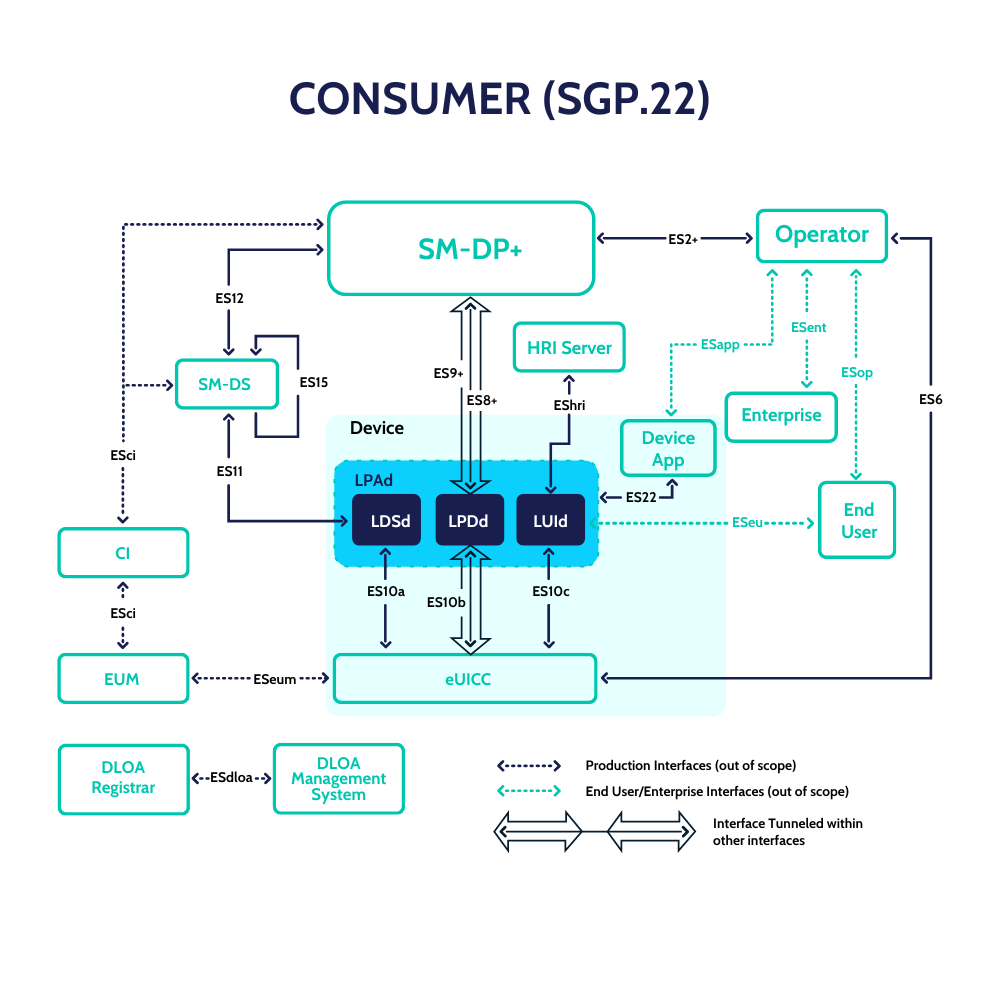
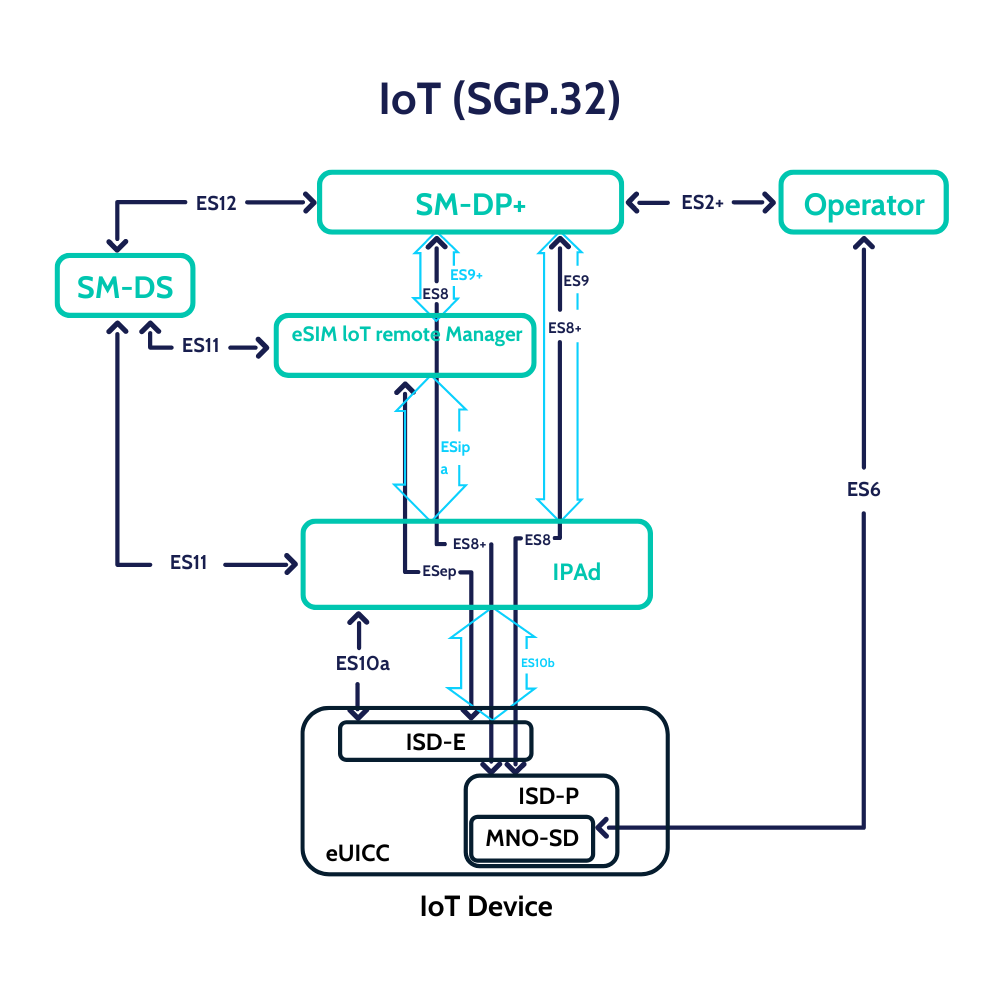
Source: GSMA
SGP.32 incorporates the features of the two existing eSIM specifications (SGP.02 and SGP.22), offering a unified standard for IoT device manufacturers and MNOs. With IoT eSIM standard (SGP.32) the industry gets the best of both existing specifications (SGP.02 & SGP.22) by – simplifying the integration among large number of MNOs & OEMs; and support for constrained (battery, UI, communication protocol) IoT devices.
The Benefits of the IoT eSIM Specification (SGP.32)
The IoT eSIM specification (SGP.32) offers several benefits to IoT device manufacturers, MNOs, and end-users:
- Simplified integration: The new standard streamlines the integration of eSIMs among a large number of MNOs and OEMs, reducing time-to-market and integration costs.
- Cost savings: Standardization can help reduce costs by simplifying the development and implementation of eSIMs and ensuring that devices and networks are compatible with one another.
- Improved device performance: SGP.32 enables the use of eSIMs in constrained IoT devices, improving device performance by reducing power consumption and taking up less space.
The Future of IoT eSIM Adoption and Integration
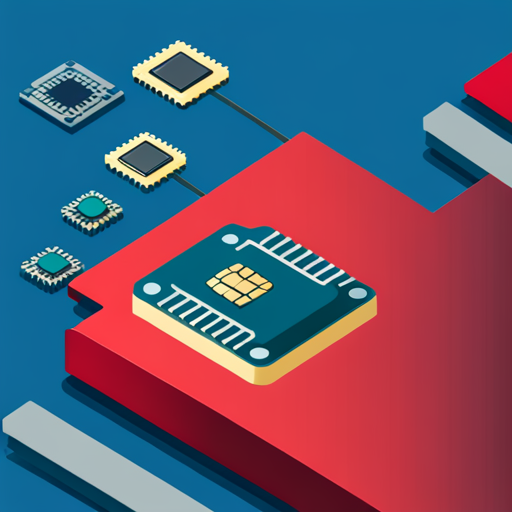
The new IoT eSIM specification (SGP.32) is expected to accelerate the adoption of eSIMs in IoT devices. It is also expected to drive the growth of the IoT market by making it easier for manufacturers to integrate eSIMs and for end-users to adopt IoT technology. Moreover, the use of eSIMs could lead to the creation of new business models and revenue streams for MNOs, such as pay-as-you-go data plans for IoT devices.
The publication of the IoT eSIM Specification (SGP.32) by the GSMA is a significant development in the IoT connectivity space. By providing guidelines for how eSIMs should be integrated into IoT devices, SGP.32 can help accelerate eSIM adoption and make it easier for organizations to get their devices connected and communicating with one another. Its support for remote SIM provisioning, constrained devices, and security features are all major advantages for IoT use cases, making it a valuable tool for anyone working with connected devices. As the IoT continues to grow and evolve, standards like SGP.32 will play an increasingly important role in enabling seamless connectivity and reliable communication between devices.
The future of IoT eSIM adoption looks promising, and devices are likely to become more efficient and cost-effective as manufacturers move towards incorporating eSIMs seamlessly.
The Importance of Choosing an eSIM Platform That Supports SGP.32
Others might claim something different, but we won’t lie to you: SGP.32 is not ready for prime time yet. Testing and compliance requirements are not even defined or published yet by the GSMA. OEMs will not have product line support until next year.
As a result, it’s important to cut through the hype and marketing spin…
True SGP.32 Functionality Is Not Here Yet
Any connectivity platform claiming to support the new standard is simply providing a customized, bespoke preview at best, and outright misinterpreting the technology at worst.
For businesses looking to cut through the noise, it’s important to look at the foundational technology companies on the GSMA website. These are the companies that will offer platforms with end-to-end functionality. TEAL is the first North American based eSIM platform to be certified by the GSMA for SGP.02 and SGP.22. This is a testament to our commitment to lead the charge in advancing the applications of this revolutionary technology. Don’t take our word for it, check out Teal’s listing on the GSMA website by clicking on this link: GSMA | SAS Accredited Sites – Security
We’re opening up our eSIM SGP.32 Industry Beta for any device maker eager to preview this new technology. Sign up today for a preview of this new technology and participate in Teal’s eSIM SGP.32 Industry Beta.
➡️Sign Up Here
If you’re evaluating eSIM technology for your organization, be sure to check out the GSMA MWL eSIM Buyer’s Guide for Enterprise, which outlines the different types of suppliers of eSIM functionality. We’ve made this useful guide available on our website for free here: eSIM: A Buyer’s Guide for Enterprise
Future Outlook of eSIM Adoption
Teal recently launched the first GSMA certified eSIM solution built specifically for Mobile Network Operators (MNOs). PLUS+ is a unique cloud native SMDP+ solution designed to accelerate MNO and MVNO carrier eSIM strategy.
For the past several years, PLUS+ has been quietly learning from and supporting private LTE network deployments from CBRS alliance members, but with a full security certification; it is now ready to support the large consumer-focused public cellular network carriers. We have also supported some of the first SGP.31/32 technology demos.
PLUS+ provides a fresh take on the traditional legacy platforms provided by a small list of other SMDP+ vendors. It was designed from the ground up to provide self-service functionality for MNO eSIM, SIM, and iSIM teams. This has the benefit of ultimate control and flexibility while also delivering profile and data generation services without any setup fees and lower operating costs than competitive solutions. The innovative commercial structure of PLUS+ is expected to measurably increase eSIM adoption worldwide.
Interested in learning more? Contact a Teal IoT expert today!
Recent Posts
CES 2026: The Connected Future, Through TEAL’s Lens
Teal Communications Staff2025-12-18T18:58:56+00:00
The Fastest Growing Company in the PNW isn’t an AI Startup… it’s TEAL
Teal Communications Staff2025-12-10T20:43:23+00:00
The Sky is the New Cell Tower: Satellites Are Reshaping the MNO Landscape
Teal Communications Staff2025-12-09T21:28:24+00:00



